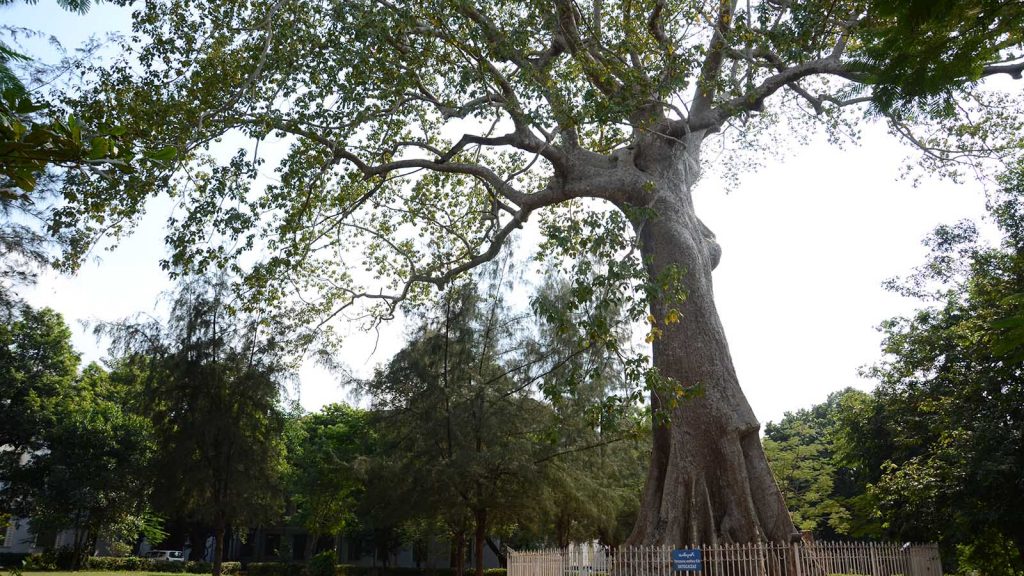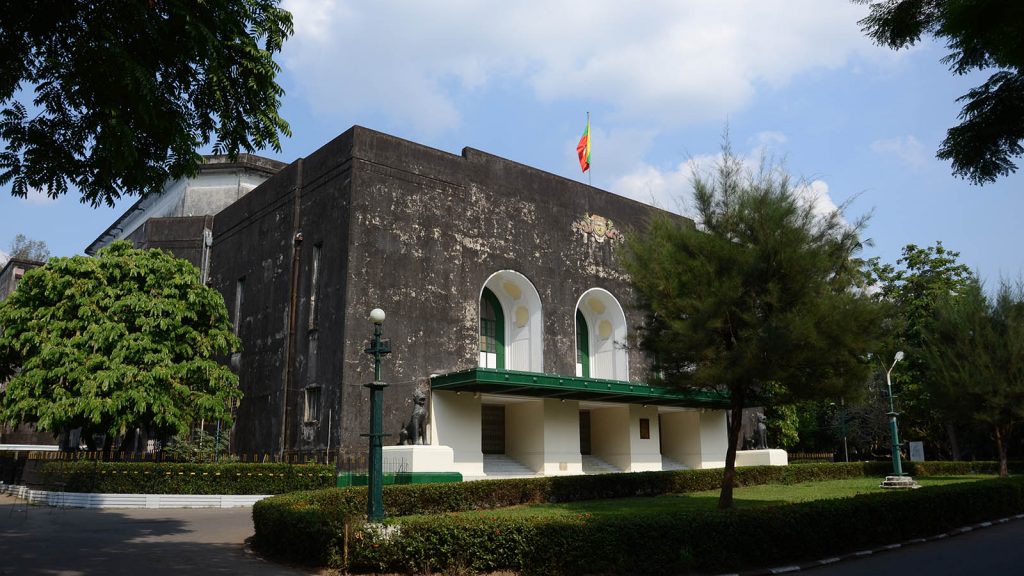By Dr. Saw Mra Aung
Yangon University College and Judson College were welded together into Yangon University on 1st December,1920 under the New Yangon University Act. However, their lecture-rooms still remained at the buildings on Commissioner Road ( Present Bogyoke Aung San Road in Latha Township) and Lower Kyein-myaing-daing Road in Alone Township) where the two colleges were located. Woman-students and man-students were also housed at the brick-buildings on Simpson Road, Voyle Road, Shwedagon Pagoda Road and Budd Road in downtown Yangon.Therefore, the new Kamayut Yangon University Estate was then just an over 400-acre stretch of thickly wooded land infested with mosquitoes and wild animals.To its south-west lay the sullen Kyan-taw Cemetery interspersed with groves of wild pine-apples, to the west sleepy Kamayut Village and to the north secluded Inya Lake surrounded by densely forested bunds.
In 1922, the Convocation Hall was constructed in the northern-most part of the estate. In 1924, wooden Tagaung and Pyi Halls of residence were built in the southern part of the Yangon University Estate near Pyi Road which was then a narrow tarred road. Man-students from Yangon University College started to be accommodated there in the 1925-26 academic year. As the estate was so thickly forested, the two halls were hidden from each other. In 1926, Bagan Hall, another wooden hall of residence, was built at the end of Victoria Lane which branched off due east from Pyi road.Since this hall was in isolation from other two halls, it was called ‘Andaman Hall’( တစ်ကျွန်းဆောင်).But it was bombed by the Japanese during the Second World War. The plot of the land at the end of Bagan Road just across the University Hospital today is the site of Bagan Hall.Bagan Hall was later rebuilt of bricks on Thaton Road behind the University of Education.

Warden of Pyi Hall was Mr.B.R. Pearn. But soon, he was succeeded by U Po Chu.Warden of Tagaung Hall was Mr. Robert. Soon also, U Po Thone was appointed to his position. U Kar was Warden of Bagan Hall. The students had to live happily and securely under their fatherly care, enjoying the freedom of hostel students’ life. But the students faced two foes at night-fall. The first foe was the mosquitoes which bred in profusion amongst the thick foliage of various species of trees such as jack-fruit, Mayan, Ye-tamar, Kukko, mango, pine-apple,etc growing inextricably on the marsh land around the halls. When the darkness descended from the sky at twilight, those blood-suckers came swarming around the students. So those who engaged themselves in converstion after dinner fell prey to those animals. Therefore, some of them, upon dinner, had to put up their mosquito-nets in their room and to stay inside them to evade their stings. The second foe was the thieves who made frequent raids into the privacy of the rooms of the hostelers and rummaged around for valuables while they were fast asleep or during their visits to their friends’ rooms. Therefore, it was common for the students to leap to their feet from bed in the dead of night and to in vain ran, raising hues and cries, after the invaders who merged into the bushes swathed in darkness behind the halls. As the thieves were thought to come from the neighbouring villages, the students were strictly debarred by Principal D.J. Sloss from mixing with the villagers from Kamayut and other villages in the immediate vicinity of the premises.
There stood some clumps of big trees between the halls and Inya Lake adjacent to Yangon University Estate. In those days, the wooded Inya Lake was rumored to be haunted by tigers and man-eating water-ogres. Therefore, some chicken-hearted students avoided visiting it even during the day-time. A few brave students, however, used to go there for a swim on some evenings.Since 1923, the Yangon University Boat Club had been formed with the students from University College and Judson College. It was chaired by a British advocate Mr. Edgar who later became a law professor at Yangon University. He was an executive member of the Cambridge and Oxford University Boat Clubs while living in England. The office of the club was built in a piece of the land jutting out into Inya Lake. In December 1926, Ko Khin Maung Myint, a hosteler from Tagaung Hall was drown to death while swimming with other two or three friends near the University Boat Club. It is said that the students who lived in the rooms near his dare not sleep alone that night and that they, therefore, had to sleep in groups of two or three in a room. From that day onwards, wardens of the halls used to follow the swimmers to the lake when they returned late and to coax them into going back before dusk.
As the lecture-rooms continued to exist at Yangon University College, the students from the halls had to trudge across the Kyan-taw Cemetery and groves of pine-apples to the Hanthawati Rail-way Station and took the Insein local train which reached there between 8:30 am and 10:00am and proceeded to the college across the Yangon General Hospital on Commissioner Road. After their classes, they had to return to the halls at 4.pm by that train. It is said that some students who returned late for some reasons were harried by vallians amongst the groves of wild pine-apples or haunted by ghosts at the Kyan-taw Cemetery on the way back.University Avenue and Inya Road were not yet built until 1925.
To be continued


